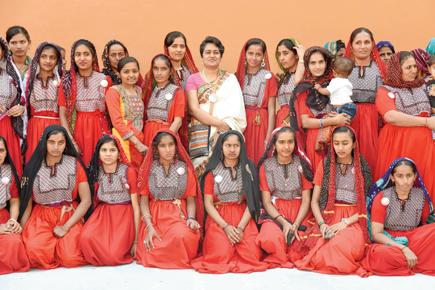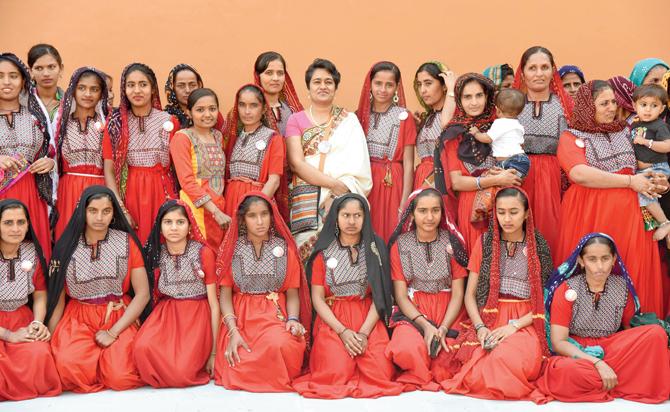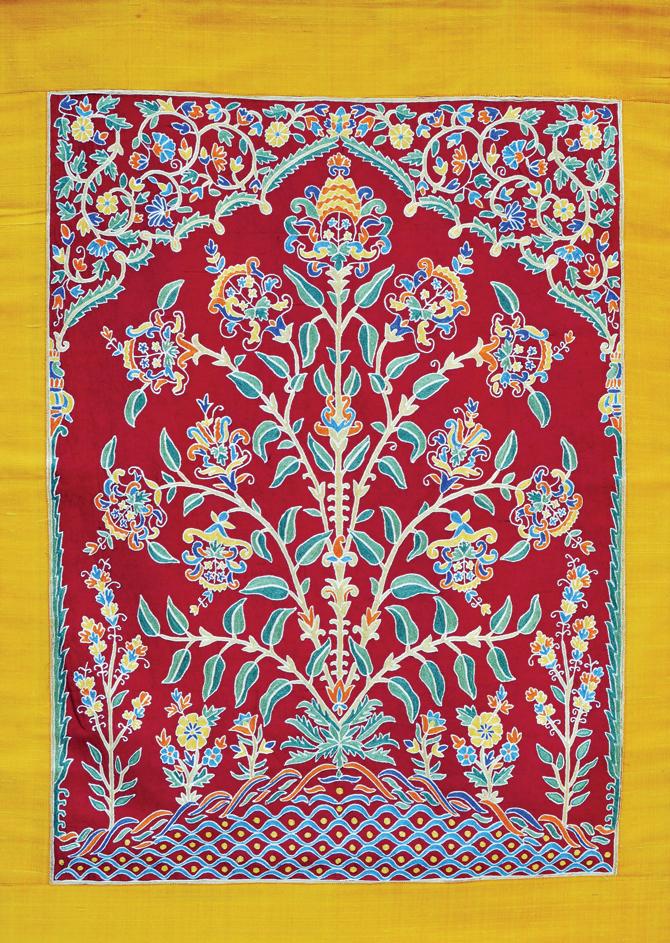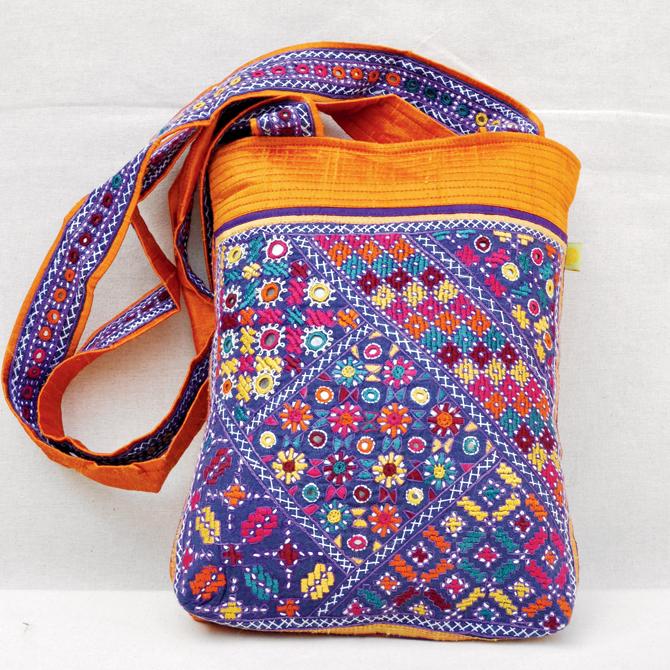With the opening of Gujarat's biggest Crafts Museum in a village near Bhuj, an NGO has created a permanent home for Kutchi craftsmanship

Forty-seven years ago, Chanda Shroff was helping out at a Ramakrishna Mission event in Kutch when she noticed that locals refused to accept free food and preferred to work for it. She also realised that the women wore exquisite embroidery, which they worked on personally and only for themselves. Initially, she requested the artisans to create 30 saris that were sold out and earned them well. Soon, she began receiving postcards from villages across Kutch, requesting her to help them too. This led to the foundation of the Shrujan (creativity in Sanskrit) Trust.
ADVERTISEMENT

Ami Shroff (in centre) with artisans
“In Kutch, each region has its own embroidery tradition that indigenous sects wear to mark their identity (there are 12 communities in the region). Artisans were surprised and confused when my mother approached them. They had never embroidered commercially and didn’t think that people from elsewhere will wear their embroidery,” shares Ami Shroff, who currently heads the Trust.

Aari embroidery from Kutch
The Trust initiated an ambitious project called The Living and Learning Design Centre (LLDC) on January 23 this year, which is an artisan-dedicated, multi-dimensional craft education and resource centre. The campus lies amidst eight acres of fruit orchards near Ajrakpur village, 16 kms from Bhuj. It aims to train, and support artisans to practice their traditional crafts for contemporary markets.
 An embroidered bag
An embroidered bag
Earlier this month, the centre opened its doors to everyone interested in the Kutch craft heritage with the launch of the biggest Crafts Museum in Gujarat that showcases traditional as well as contemporary, crafts from the region. “There are 22 kinds of crafts practised in Kutch region, including varieties of textile, wood work, metal work and pottery. The idea was to revive the people’s pride in their rich craft heritage. This is why the museum is based in rural Kutch and not in an urban part of Gujarat,” says Shroff, adding that this will also present an opportunity for communication between designers and artisans.
The Bhuj-based non-profit has helped revive the skill of hand embroidery from Kutch work and documented the craft. “Most communities don’t embroider for the current generation. Since the 1980s, when nylon emerged, people switched to using it. This also led to a drop in quality of weaving, knowledge was gradually getting lost. Hence, the need to archive this information,” reveals Shroff.
 Subscribe today by clicking the link and stay updated with the latest news!" Click here!
Subscribe today by clicking the link and stay updated with the latest news!" Click here!






